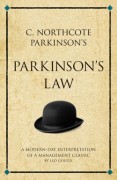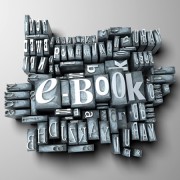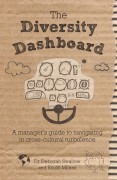Author Archives: Admin
Efficiency in business: The relevance of Parkinson’s Law in the twenty-first century
25 June 2013 by Admin in Book publishing
It is a commonplace observation that work expands so as to fill the time available for its completion. Thus, an elderly lady of leisure can spend the entire day in writing and despatching a postcard to her niece at Bognor Regis. An hour will be spent in finding the postcard, another in hunting for spectacles, half-an-hour in a search for the address, an hour and a quarter in composition, and twenty minutes in deciding whether or not to take an umbrella when going to the pillar-box in the next street. The total effort which would occupy a busy man for three minutes all told may in this fashion leave another person prostrate after a day of doubt, anxiety and toil.
Cyril Northcote Parkinson, The Economist, 1955
Infinite Ideas author Leo Gough recently featured in this Radio 4 broadcast, commenting on the relevance of C. Northcote Parkinson’s fascinating theory first summarised in an article written almost fifty years ago.
 As you might have learned from the behaviour of the elderly lady in Bognor Regis, Parkinson’s Law examines the misuse – by individuals and by the companies they work for – of time, energy and resources. Put simply (and rather brutally), employees might seek to secure their positions, or individuals might seek to fill their time, by creating unnecessary work for themselves – giving rise to waste and inefficiency. Although delivered in a satirical style Parkinson’s book presents an acute analysis of organisational behaviour, which can be used for solving problems, maximising efficiency and increasing productivity.
As you might have learned from the behaviour of the elderly lady in Bognor Regis, Parkinson’s Law examines the misuse – by individuals and by the companies they work for – of time, energy and resources. Put simply (and rather brutally), employees might seek to secure their positions, or individuals might seek to fill their time, by creating unnecessary work for themselves – giving rise to waste and inefficiency. Although delivered in a satirical style Parkinson’s book presents an acute analysis of organisational behaviour, which can be used for solving problems, maximising efficiency and increasing productivity.
Fundamentally opposed to deeply ingrained practices and, historically, class-based structures, Parkinson champions freedom from bureaucracy. For a business this could mean favouring individual productivity over reliance on overpaid executives and hierarchical systems, but it can be applied within all institutions, organisations and government.
Parkinson’s observations are as pertinent now as they were back in the mid-twentieth century. Look down the business bestsellers chart on Amazon and it’s clear that people need, demand and indeed consume huge quantities of personal development content, believing it will help them to function in a confusing and often stressful working environment where they may feel undervalued, dispensable or even redundant.
 So how accurate were Parkinson’s observations? Very, apparently. Listen to the Radio 4 broadcast to find out how mathematicians have analysed Parkinson’s theories and proven them to be correct and precise. Or check out our modern-day interpretation of Parkinson’s Law for more contemporary examples demonstrating the truth of Parkinson’s Law.
So how accurate were Parkinson’s observations? Very, apparently. Listen to the Radio 4 broadcast to find out how mathematicians have analysed Parkinson’s theories and proven them to be correct and precise. Or check out our modern-day interpretation of Parkinson’s Law for more contemporary examples demonstrating the truth of Parkinson’s Law.
If, at some point in the future, you happen to be made redundant from work by somebody who leaves the office earlier than you do or suddenly develop a passion for the alphabetical order of your filing cabinet, or find yourself slaving over a postcard for your Mum (who you spoke to last night) perhaps you’ll remember Cyril and consider that he may just have had a point.
Customer engagement strategies: The future of marketing
25 June 2013 by Admin in Business and finance
We’re always banging on about delivering content to consumers at the moment they most need it. Examples? Well, interview technique advice might best be read on your smart phone half an hour before the interview. Or public speaking tips right before you take the stage. That’s the beauty of mobile communications.
Sponsored content provided in this way does offer brands great ways to communicate and to enhance consumer loyalty and engagement. There are a couple of great examples of this from Brazil on the Springwise roundup. Hellmann’s are offering recipe advice to shoppers with a trolley-mounted tablet. Genius. And then there’s the test drives being offered to motorists who break down. Chevrolet turn up with the tow truck and the lucky motorist gets to drive their car home – free. A great way for a brand to engage.
 Another thing we’re quite keen on at Infinite Ideas is having a drink when you want one, so we were also struck by a South African initiative for beer lovers at music festivals. Using your mobile a drone swoops in and delivers you a refreshing tinny. It’s great that drone technology can be used for some positive purpose. It’s on that same Springwise roundup.
Another thing we’re quite keen on at Infinite Ideas is having a drink when you want one, so we were also struck by a South African initiative for beer lovers at music festivals. Using your mobile a drone swoops in and delivers you a refreshing tinny. It’s great that drone technology can be used for some positive purpose. It’s on that same Springwise roundup.
Cheers!
Brand enhancement: another thought-provoking argument
19 June 2013 by Admin in Business and finance
Here’s another thought-provoking argument about fast food brands and their use of a Disney tie-in to enhance their brand. But it seems to us it’s all a bit old hat (and the one comment on the site as I write this would seem to agree with me). MacDonald’s and Burger King have been doing this kind of thing for ages and so the argument goes that it probably works in terms of engaging with kids and, more importantly, their parents. But haven’t these brands got some real social responsibility in terms of trying to get young people to eat healthily? Is a tie in with Monsters Inc. going to do anything to reduce obesity in this country?
 Yeah, I know, it isn’t their remit to get kids to eat healthily. It’s their remit to increase their investors’ dividends (oh I’m such an old leftie!) The operative word in the article is ‘healthier’ (‘In-store training has been provided to staff to improve their interaction with children and encourage them to choose healthier options.’) I’m not a nutritionist (my waist line bears that out) but I reckon their healthier options are still packed with salt fat and sugar, all of which probably exceed the recommended daily intake.
Yeah, I know, it isn’t their remit to get kids to eat healthily. It’s their remit to increase their investors’ dividends (oh I’m such an old leftie!) The operative word in the article is ‘healthier’ (‘In-store training has been provided to staff to improve their interaction with children and encourage them to choose healthier options.’) I’m not a nutritionist (my waist line bears that out) but I reckon their healthier options are still packed with salt fat and sugar, all of which probably exceed the recommended daily intake.
It all just seems a tad lazy on the part of the marketers involved. Bung a few million at a big brand for a tie in – job done.
Let me get my soap box out again (sorry) but shouldn’t brands be trying to engage with their customers through intelligently produced, interesting content? I mean interesting, well written, properly informative content that might – just might – make people properly aware of what they are actually feeding their kids? Surely with a bit of intelligent thinking, brands can increase their consumer engagement and improve customer loyalty?
Anyway, I’ve put my soap box away and am heading off for a waistline-saving Subway feast with a Big Mac for pudding. Now where’s the harm in that?
Surviving and thriving in cross-cultural turbulence at work
13 June 2013 by Admin in Business and finance, Lifestyle
Unless you never venture beyond your home town, you’ll know that engaging with a person from a different background, sometimes under unusual and unpredictable circumstances, or in a new environment, requires a certain amount of understanding – or cultural intelligence. Often in life we need to modify our behaviour – our body language, the way we speak or the way we use humour, for example – in order to blend in. In business this understanding can be achieved through cross-cultural training; it’s becoming increasingly important with the intensification of globalisation, as foreign business escalates within corporations and SMEs alike.
As any good manager will know, the absence of cross-cultural intelligence in the workplace can impede productivity, inhibiting performance and preventing organisations from succeeding fully in their chosen markets. If you’re one such manager, you’ll be relieved to know that we’ve just published the antidote to your cultural nightmare. Packed with fun graphics and indispensable advice, The diversity dashboard is a breakthrough quick reference guide that will help you to bridge cultural gaps using practical insights and the clever analogy of a pilot’s cockpit – you need a triple A rating to operate your plane; if you’re struggling to attain your wings and become culturally competent, remember these three As:
- Awareness of your own culture: knowledge about yourself and your core values and how these are expressed in attitudes, behaviours and communication in the workplace;
- Assessment of other cultures: awareness of others and the ability to compare and contrast otherness with various tools and techniques;
- Action: continuing curiosity to learn more, the willingness to adapt and be flexible, and the ability to identify and respond creatively to cultural challenges and conflicts in ways that both respect and engage the other person.
Co-written by intercultural management consultant Dr Deborah Swallow and experienced motivational speaker Eilidh Milnes, this essential guide adopts a fun and realistic approach to a complex, often overlooked subject. We’re delighted that the world’s foremost culture specialist, Fons Trompenaars, seems to agree.
A rich and invaluable resource … precise, accessible advice on handling cross-cultural differences in today’s frenetic business world.
Fons Trompenaars, author of the bestselling Riding the Waves of Culture
We love Marketing Week
10 June 2013 by Admin in Book publishing
Just have a skim through the article that hit our inbox today. It’s refreshing to see that the digital revolution is causing as much angst and navel gazing in the marketing world as it has in the quaint old world of book publishing.
Today, brands can reach consumers twenty-four hours a day through social media, text messages and cold calling (yuck). But do such techniques really enhance customer loyalty and customer engagement? As simple consumers ourselves, we’re doubtful. Will an allegedly humorous YouTube video that is designed to go viral really help brands communicate, or will it simply create a brief chuckle and a short wait for the next piece of wackiness to come along?
Lara O’Reilly talks about the phenomenon in this article, referring to it as Trigger Happy TV. It seems to us that these campaigns focus on the medium and not the message – ‘There’s Facebook – we’d better use…’ seems to be the default position. Of course, customer loyalty and customer engagement can be enhanced by viral campaigns, so long as they are used intelligently. One of our favourites from a few years back (you’ve probably seen it, over 2 million people have) is Robert Carlyle in the Johnnie Walker video. That’s truly brilliant.
 So what else works? Let’s look at some of the latest devices – the iPhone; the iPad; the Kindle. Customers can easily access the content they need at the precise time they need it – and unsurprisingly, they keep coming back for more. Big presentation to give? Well hone your presentation skills on your iPhone in the cab en route to your audience. Off on holiday in a few weeks? Access some toning tips on your Kindle during your lunch break. Valuable useful content, delivered to consumers at precisely the time they want to use it, is a fabulous way to develop customer engagement and build customer loyalty – and there need be no pesky texts or embarrassing videos in sight.
So what else works? Let’s look at some of the latest devices – the iPhone; the iPad; the Kindle. Customers can easily access the content they need at the precise time they need it – and unsurprisingly, they keep coming back for more. Big presentation to give? Well hone your presentation skills on your iPhone in the cab en route to your audience. Off on holiday in a few weeks? Access some toning tips on your Kindle during your lunch break. Valuable useful content, delivered to consumers at precisely the time they want to use it, is a fabulous way to develop customer engagement and build customer loyalty – and there need be no pesky texts or embarrassing videos in sight.
Real-time marketing
15 May 2013 by Admin in Book publishing
I was struck by this article in Marketing Week, ‘Heineken to build ‘real-time marketing’ drive around mobile, relating to Heineken’s new marketing push.
Real time marketing to consumers – communicating with them at the precise moment they are engaging in an activity or an interest – seems to be the buzz idea at present. And of course the ubiquitous smart phone, combined with Twitter, Facebook and other social networking sites, lends itself perfectly to this. Communication with consumers becomes dynamic, instant and relevant.
The same thing is happening on television. Think of the ads you see just before a live football game, offering you odds on how long it will take Luis Suárez to chew a defender’s arm off completely. It’s perfect – a captive audience that can be sold to when they’re most responsive.
 We’ve seen this at Infinite Ideas with the rise and rise of e-books. For the first time, on impulse, you can download content when you want it and start acting on it immediately. It’s the night before your big interview? Well you can download myriad guides on interview techniques instantly. They’ll provide hot tips for success that you can access to bolster your chances right up to sitting in the waiting room. And many of these e-books are free, or at least a fraction of the price you would pay for a physical printed book.
We’ve seen this at Infinite Ideas with the rise and rise of e-books. For the first time, on impulse, you can download content when you want it and start acting on it immediately. It’s the night before your big interview? Well you can download myriad guides on interview techniques instantly. They’ll provide hot tips for success that you can access to bolster your chances right up to sitting in the waiting room. And many of these e-books are free, or at least a fraction of the price you would pay for a physical printed book.
Book publishers dealing in the consumer reference sector need to start thinking in this way. If someone feels a nasty twinge in their back they’re pretty unlikely to hobble down to their local Waterstone’s and browse the shelves. More likely they’ll go online – and they will pay for good content.
Books – electronic and printed – are still relevant in this digital age, more so in fact, given that the internet offers up swathes of content much of which is unedited and sometimes just plain wrong. Content in a book from a reputable publisher will have been properly researched, edited and proofread.
So the challenge for conventional publishers is how to respond to the ever changing digital market place. The more enlightened ones are looking to offer content through as many platforms as possible – from print to app and onwards – all with the ultimate aim of delivering great content to consumers at the precise point they want to consume.

